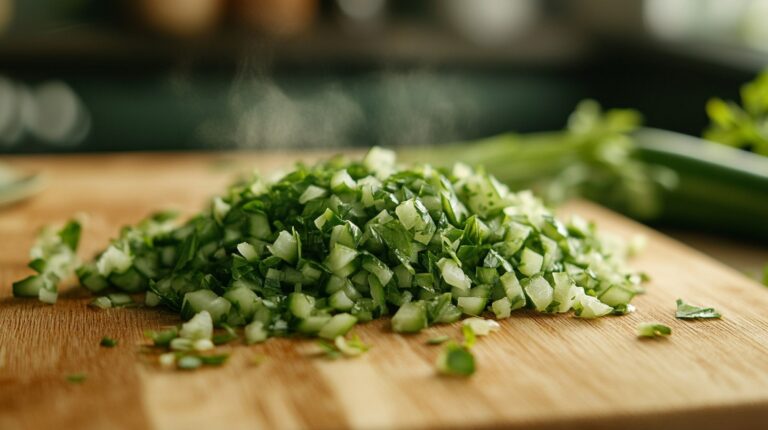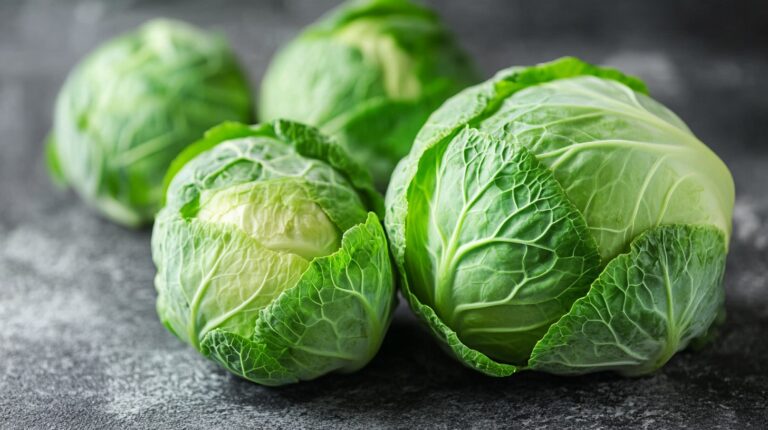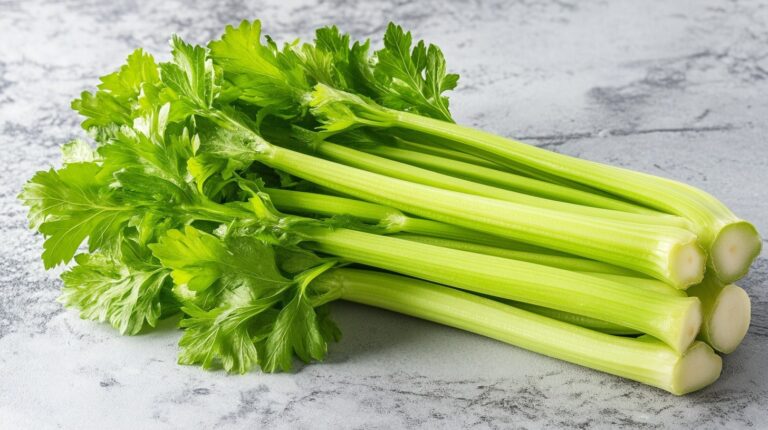Eating raw okra can be a healthy addition to your diet. It’s packed with vitamins and minerals like A, C, K, and B vitamins, plus essential minerals like potassium, magnesium, and calcium. Raw okra is low in calories and almost fat-free, making it a great choice for those watching their weight.
However, raw okra has its downsides. It contains oxalates, which can lead to kidney stones in some people, and lectins, which might cause digestive issues like bloating and gas.
Raw okra can be a crunchy snack, a fresh addition to salads, or even blended into smoothies. Its antioxidants help fight oxidative stress, lowering the risk of chronic diseases.
For those who enjoy its unique flavor and texture, raw okra can be a versatile and nutritious choice, but moderation and proper preparation are important.
Health Benefits of Raw Okra

| Rich in Nutrients | Contains vitamins A, C, K, and B-complex, along with potassium, magnesium, and calcium. |
| High in Fiber | Supports digestion, helps manage weight, and stabilizes blood sugar levels. |
| Antioxidant Properties | Helps combat oxidative stress and reduce the risk of chronic diseases. |
| Low in Calories | Provides a healthy option for those watching their calorie intake. |
| Heart Health | Lowers cholesterol and helps maintain blood pressure. |
Rich in Nutrients
Raw okra is loaded with vitamins A, C, K, and B-complex vitamins such as B1, B2, B3, B6, and folate. These vitamins are essential for various bodily functions including immune support, blood clotting, and energy production.
Additionally, it contains important minerals like potassium, which helps regulate fluid balance and blood pressure; magnesium, which is vital for muscle and nerve function; and calcium, which is crucial for bone health.
High in Fiber
@theokraladyllc It’s okra season in my garden. The taste of raw okra is quite different from cooked okra, and opinions on its flavor can vary widely. I enjoy the mild, slightly grassy taste of raw okra! Raw okra has a crisp texture and a natural earthy flavor. It can be refreshing and pleasant when added to salads or used as a crunchy topping. Some people also enjoy dipping raw okra in sauces or dressings as a snack. However, due to its natural sliminess, some individuals may find the texture unappealing when consumed raw. Cooking okra, whether by sautéing, roasting, frying or adding it to stews, can help reduce the sliminess and bring out a nutty flavor. If you’re unsure about trying raw okra, you might want to experiment with different cooking methods to see if you prefer the taste and texture when it is cooked. Okra is easy to grow, especially in warm climates. It is a warm-season vegetable. If you live in a region with a shorter growing season, you can still grow okra by starting the seeds indoors and then transplanting the seedlings outdoors once the weather warms up. This is my Gold Coast okra. Are you growing okra? #okra #okraplants #okraseeds #ladyfingers #freshokra #okre #goldcoast #okras #okralover #theokraladyllc #gardentok #gardenersoftiktok #growokra #gardeninspo #summergarden
Raw okra is an excellent source of dietary fiber. This fiber is essential for maintaining digestive health, promoting regular bowel movements, and preventing constipation. It also aids in weight management by providing a feeling of fullness, which can help reduce overall calorie intake.
Moreover, fiber helps stabilize blood sugar levels by slowing down the absorption of sugar into the bloodstream, which is beneficial for people with diabetes.
Antioxidant Properties
Okra contains various antioxidants such as flavonoids, polyphenols, and beta-carotene. These antioxidants play a significant role in protecting the body from oxidative stress by neutralizing free radicals.
By reducing oxidative stress, antioxidants can lower the risk of chronic diseases such as heart disease, diabetes, and cancer.
Low in Calories

Raw okra is a low-calorie food, with one-half cup containing only about 18 calories. This makes it an ideal choice for those who are conscious of their calorie intake and looking to maintain or lose weight.
Its low-calorie content combined with its high fiber content makes it a nutritious and filling option without adding significant calories to your diet.
Heart Health
The fiber in raw okra can help lower cholesterol levels by binding to cholesterol in the digestive system and facilitating its excretion from the body. This process helps reduce overall cholesterol levels, which is beneficial for heart health.
Additionally, the potassium content in okra helps maintain healthy blood pressure levels by counteracting the effects of sodium and relaxing blood vessel walls.
Nutrition
| Nutrient | Amount per 100g | % Daily Value |
|---|---|---|
| Calories | 33 kcal | 2% |
| Carbohydrates | 7.5 g | 3% |
| Protein | 2.0 g | 4% |
| Fat | 0.2 g | 0% |
| Fiber | 3.2 g | 13% |
| Vitamin C | 23 mg | 26% |
| Vitamin A | 36 µg | 4% |
| Vitamin K | 31.3 µg | 26% |
| Folate | 60 µg | 15% |
| Calcium | 82 mg | 8% |
| Magnesium | 57 mg | 14% |
| Potassium | 299 mg | 6% |
Calories and Macronutrients
Raw okra is low in calories, providing only 33 kcal per 100 grams, making it an ideal food for those aiming to maintain or lose weight. It contains 7.5 grams of carbohydrates, 2.0 grams of protein, and only 0.2 grams of fat. The low-fat content is especially beneficial for those looking to reduce their overall fat intake.
Dietary Fiber
With 3.2 grams of fiber per 100 grams, raw okra is an excellent source of dietary fiber. This fiber aids in digestion, helps maintain stable blood sugar levels, and supports weight management by promoting a feeling of fullness.
Vitamins

Okra is rich in vitamins that are essential for various bodily functions:
- Vitamin C (23 mg, 26% DV): Boosts the immune system, promotes healthy skin, and aids in the absorption of iron from plant-based foods.
- Vitamin A (36 µg, 4% DV): Supports vision, immune function, and cell growth.
- Vitamin K (31.3 µg, 26% DV): Plays a crucial role in blood clotting and bone health.
- Folate (60 µg, 15% DV): Essential for DNA synthesis and repair, crucial during periods of rapid growth such as pregnancy.
Minerals
Raw okra is also a good source of essential minerals:
- Calcium (82 mg, 8% DV): Important for maintaining strong bones and teeth, as well as muscle function.
- Magnesium (57 mg, 14% DV): Involved in over 300 biochemical reactions in the body, including energy production and muscle contraction.
- Potassium (299 mg, 6% DV): Helps regulate fluid balance, muscle contractions, and nerve signals.
Potential Risks

| Risk | Description |
|---|---|
| Oxalates | Can contribute to kidney stones in susceptible individuals. |
| Lectins | May cause digestive issues like bloating and gas when consumed in large amounts. |
| Allergic Reactions | Though rare, some individuals may experience itching, swelling, or difficulty breathing. |
| Digestive Issues | High fiber content can cause gas and bloating if not accustomed to a high-fiber diet. |
| Contamination Risk | Raw okra can be contaminated with bacteria like salmonella if not handled properly. |
Oxalates
Raw okra contains oxalates, which are organic compounds that can contribute to the formation of kidney stones in susceptible individuals. Oxalates bind with calcium in the body to form crystals, which may lead to kidney stones. If you have a history of kidney stones or are at risk, it is advisable to consume okra in moderation and consult with a healthcare provider.
Lectins
Lectins are a type of protein found in many plants, including okra, which can cause digestive issues when consumed in large quantities. Lectins can lead to symptoms such as bloating, gas, and nausea. Cooking okra can reduce its lectin content, making it less likely to cause digestive discomfort.
Allergic Reactions
Although rare, some people may be allergic to okra. Symptoms of an allergic reaction can include itching, swelling, and difficulty breathing. If you experience any of these symptoms after consuming okra, seek medical attention immediately.
Digestive Issues
While the high fiber content of raw okra is generally beneficial for digestion, it can cause digestive issues like gas and bloating in some individuals, especially those not accustomed to a high-fiber diet. To minimize these effects, it’s best to gradually increase fiber intake and ensure adequate hydration.
Contamination Risk
Raw okra can be contaminated with bacteria such as salmonella if not handled and stored properly. It is essential to wash okra thoroughly before consumption and to ensure it is stored in a clean, cool environment to reduce the risk of contamination.
Tips for Preparing
| Step | Description |
|---|---|
| Choose Fresh Okra | Select young, tender pods that are bright green and firm to the touch. |
| Wash Thoroughly | Rinse the pods under cool running water to remove dirt and debris. |
| Trim the Ends | Cut off the stems and tips of the okra pods with a sharp knife. |
| Slice or Chop | Cut the pods into thin slices or small pieces as per your preference. |
| Soak in Lemon Water | Optional: Soak sliced okra in lemon water for 30 minutes to reduce sliminess. |
Choose Fresh Okra
For the best results, select young and tender okra pods that are bright green and firm to the touch. Avoid larger, more mature pods as they tend to be tougher and more fibrous.
Wash Thoroughly
Before preparing raw okra, wash the pods thoroughly under cool running water. Gently rub the surface to remove any dirt or debris that may be present. This ensures that the okra is clean and safe to eat.
Trim the Ends
Using a sharp knife, trim off the stems and tips of the okra pods. This step not only enhances the appearance but also ensures that the okra is easier to eat and incorporate into dishes.
Slice or Chop
Depending on your preference and the dish you plan to use the okra in, slice or chop the pods into small pieces. Thinly slicing the pods can help reduce the slimy texture, making the okra more palatable for those who might find it off-putting.
Soak in Lemon Water
To further reduce the sliminess, consider soaking the sliced okra in water with a splash of lemon juice for about 30 minutes before consumption. The acidity from the lemon helps to neutralize the mucilage, resulting in a less slimy texture.
Delicious Recipes
| Recipe | Description |
|---|---|
| Chips | Thinly sliced okra seasoned and dehydrated or baked until crispy. |
| Salad | Sliced okra mixed with fresh greens, tomatoes, cucumbers, and a dressing of choice. |
| Smoothie | Blended raw okra with fruits like bananas and berries for a nutritious drink. |
| Pickled | Whole okra pods pickled in a brine of vinegar, salt, and spices. |
| Salsa | Finely chopped okra mixed with tomatoes, onions, jalapeños, cilantro, and lime juice. |
Chips
For a healthy, crispy snack, slice raw okra into thin rounds and season them with your favorite spices. Dehydrate or bake the slices until they become crispy. These okra chips are a nutritious alternative to regular chips and provide a unique, crunchy texture.
Salad
Add a delightful crunch to your salads by slicing raw okra and mixing it with fresh greens, tomatoes, cucumbers, and a dressing of your choice. The natural sliminess of the okra combines with the dressing, creating a unique texture that is both refreshing and satisfying.
Smoothie
Blend raw okra with fruits like bananas, berries, and a touch of honey for sweetness. This nutritious drink is high in fiber and vitamins, providing a healthy start to your day. The mild flavor of okra blends well with the fruits, making it a delicious and energizing smoothie.
Pickled
Pickling raw okra is another great way to enjoy this vegetable. Prepare a brine with vinegar, salt, and your favorite pickling spices. Place whole okra pods in a jar, pour the brine over them, and refrigerate for a few days. Pickled okra adds a tangy crunch to sandwiches or can be enjoyed as a side dish.
Salsa
Create a unique salsa by chopping raw okra finely and combining it with diced tomatoes, onions, jalapeños, cilantro, and lime juice. This okra salsa adds a refreshing twist to Mexican-inspired dishes and is perfect for dipping with tortilla chips.
Who Should Avoid Raw Okra
- People Prone to Kidney Stones: If you have a history of kidney stones, avoid raw okra. It contains oxalates that can bind with calcium to form crystals, leading to kidney stones.
- Those with Digestive Problems: If you struggle with digestive issues, raw okra might not be for you. The high fiber content can cause bloating and gas, and lectins in okra may lead to digestive discomfort.
- Anyone Allergic to Okra: Though rare, okra allergies do happen. Symptoms can include itching, swelling, and difficulty breathing. If you experience these, seek medical attention.
- Pregnant and Breastfeeding Women: It’s best to be cautious with raw okra due to its high oxalate and lectin content, which might pose risks during pregnancy and breastfeeding.
- Those with Certain Digestive Disorders: High fiber content in raw okra can worsen conditions like irritable bowel syndrome (IBS), leading to increased discomfort and digestive issues.
FAQs
How Should Raw Okra Be Stored?
Store raw okra in the refrigerator to maintain its freshness. Wrap it in a paper towel and place it in a plastic bag. This helps prevent it from becoming slimy. Ideally, use it within a few days of purchase for the best texture and flavor.
Can Raw Okra Be Frozen?
Yes, you can freeze raw okra. It’s best to slice and blanch it before freezing to preserve its texture and flavor. Place the sliced okra in an airtight container or freezer bag. Frozen okra can last for about six months.
Is Raw Okra Safe for Kids to Eat?
Raw okra is generally safe for kids to eat. It’s rich in nutrients and can be a healthy snack. However, make sure to introduce it in small quantities to ensure they tolerate the fiber content well and watch for any signs of allergies.
Can Raw Okra Help with Weight Loss?
Raw okra is low in calories and high in fiber, making it a good addition to a weight loss diet. The fiber content helps promote a feeling of fullness, which can reduce overall calorie intake.
How Does Raw Okra Affect Blood Sugar Levels?
Raw okra can help stabilize blood sugar levels. Its high fiber content slows down the absorption of sugar in the digestive tract, which can prevent spikes in blood sugar levels. This makes it beneficial for people with diabetes
Final Thoughts
Eating raw okra can be a nutritious and beneficial addition to your diet. It’s packed with essential vitamins and minerals, high in dietary fiber, and low in calories, making it a great choice for overall health.
The antioxidant properties of okra help protect against chronic diseases, and its various nutrients support functions like digestion, blood sugar control, and heart health.











